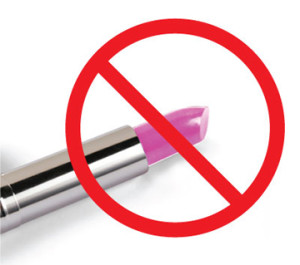Your Lipstick: Made With Cow Brains
Here’s the bad news: Cow brains may be an ingredient in your lipstick.
The good news? The FDA is banning it.
The Food and Drug Administration has told cosmetics makers they can no longer use brain and spinal cord tissue from older cattle in lipstick, hair sprays, and other products, reports The Associated Press. The fact that they were used at all will likely surprise millions of women who use these products daily. And that’s not the only surprise: The new FDA regulations still allow use of these animal tissues in cosmetics as long as they come from younger cattle.
The ban on cow brains and spinal cord tissue from cosmetics is aimed at preventing a fatal human variant of mad cow disease, called Creutzfeldt-Jakob disease, from reaching people. Also known as bovine spongiform encephalopathy, mad cow disease causes the brains of infected animals to waste away. There is no cure for animals or humans.
“While the risk is small, if there does happen to be an ingredient from a BSE-infected cow, the consequences would be incredibly drastic,” Rachel Weintraub, assistant general counsel of the Consumer Federation of America, told AP. She noted, for example, that sprays could contain animal protein that could be inhaled.
The Center for Science in the Public Interest warns consumers that it’s virtually impossible to tell from reading the label if cow brains or spinal cord tissue are included in the ingredients. Caroline Smith DeWaal, head of food safety for CSPI, urged the FDA and cosmetics’ manufacturers to publish a list of ingredients that could contain bovine material so consumers will know whether they should throw out older cosmetics that could be harmful.
AP reports that cosmetic manufacturers insist they already require their suppliers to certify that the cattle-derived ingredients sold to them are free of materials that carry BSE.






